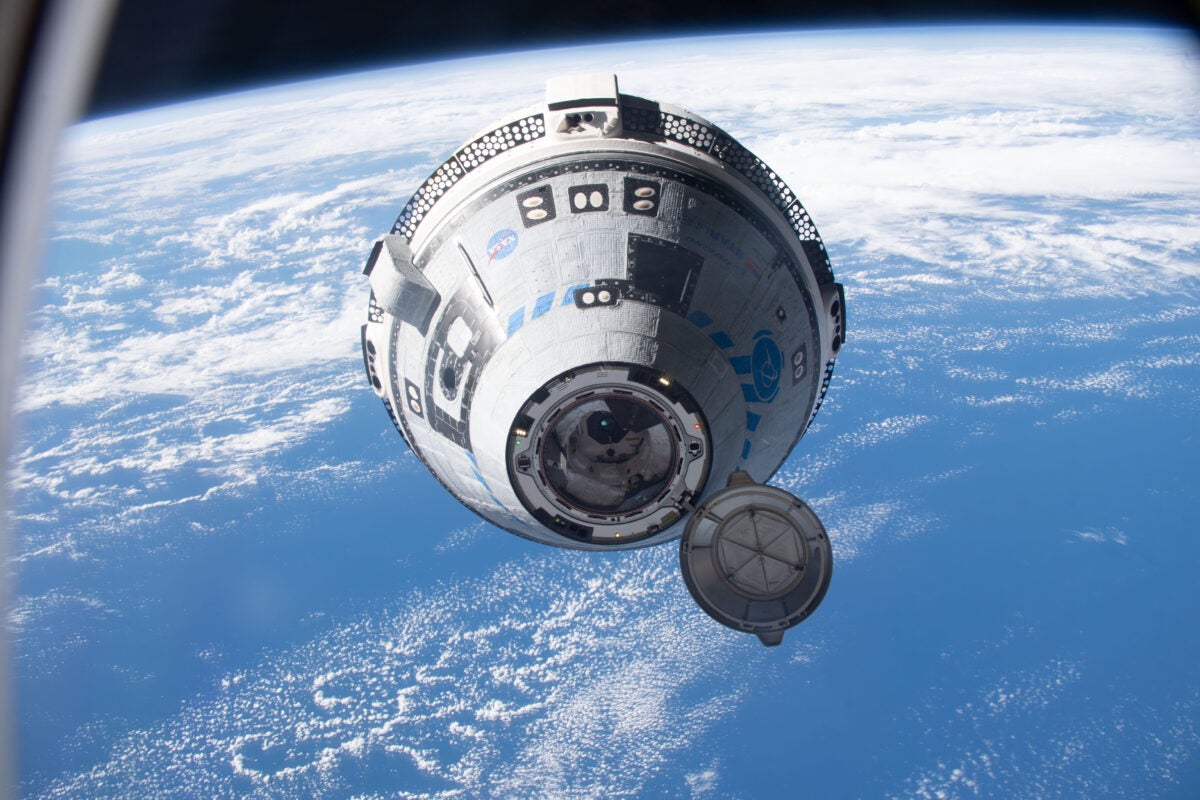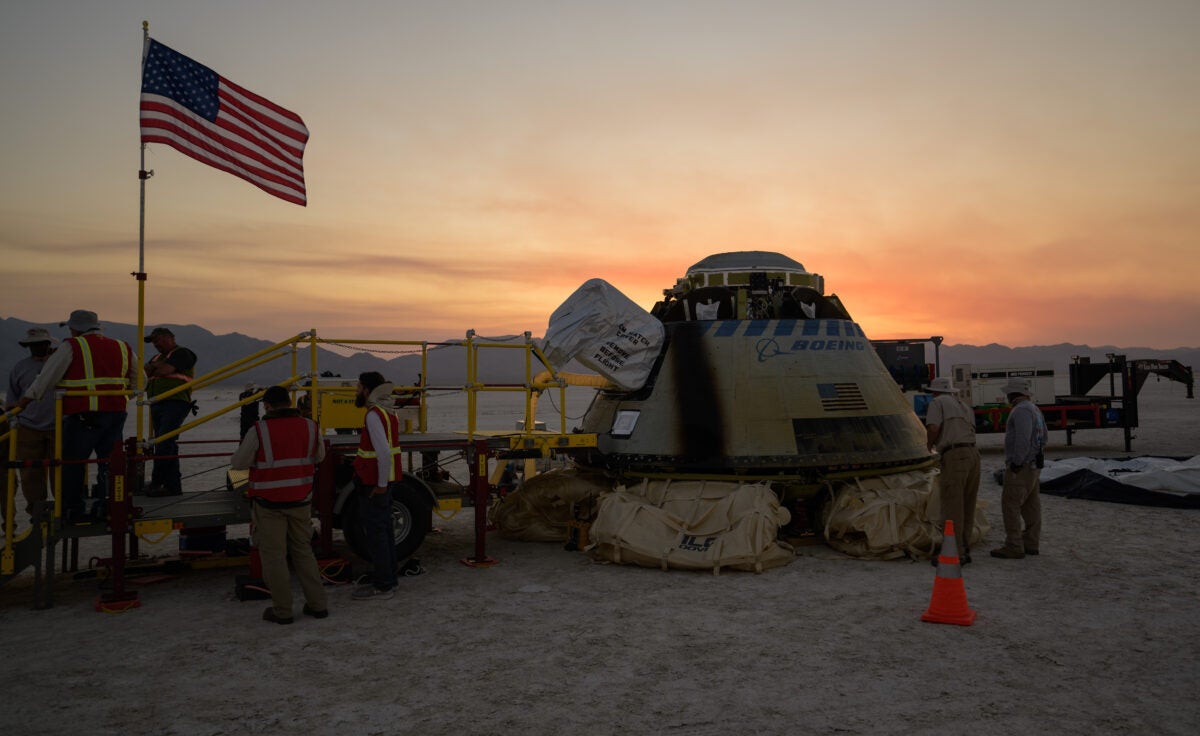The craft will return without its crew, who are staying on the International Space Station until February 2025.

Boeing Starliner’s will be attempting to return to Earth on Friday — without its crew. Credit: NASA
NASA has announced its mission timeline for the Boeing Starliner spacecraft to depart from the International Space Station (ISS) and return autonomously to Earth on Friday.
This comes after what was supposed to be a weeklong test flight to the ISS has turned into an eight-month stay for two astronauts — and a public-relations fiasco for Boeing — after Starliner experienced helium leaks and thruster malfunctions during the trip to the space station. Since their launch on June 5, NASA astronauts Barry “Butch” Wilmore and Sunita “Suni” Williams have been staying on the ISS alongside the Expedition 71 crew.
NASA announced in August that the crew would be returning via the SpaceX Dragon spacecraft next February. They won’t be the first astronauts returning to Earth in a separate spacecraft than the one they launched from, though missions extended from unforeseen factors are rare.
Related: A brief history of astronauts stuck in space
During Starliner’s return, the performance of the craft’s systems will be under scrutiny. Of particular concern are four of the service module’s aft-facing attitude-control thrusters that temporarily ceased operation during initial docking attempts. (A fifth malfunctioning thruster has been deemed unusable for the rest of the mission.)
You can watch the return on NASA’s livestream, embedded below. The undocking is scheduled for 6:04 p.m. EDT, with a target landing time of approximately 12:03 a.m. EDT on Saturday, Sept. 7.
Return to Earth
NASA’s mission timeline posted on Thursday states that safety and mission success remain top priorities for teams during Starliner’s return.
As the first American capsule designed to touch down on land, Starliner has a array of available landing locations in the White Sands Missile Range, New Mexico; Willcox, Arizona; and Dugway Proving Ground, Utah. Edwards Air Force Base in California is also available as a contingency landing site.
NASA states that it analyzes weather predictions for the various landing sites, taking note of winds, ground temperatures, cloud ceiling height, visibility, precipitation and nearby storms. Once Starliner undocks from the ISS — pushed gently by springs — the spacecraft is planned to reach its landing site in as little as six hours.
NASA has altered the planned series of thruster firings that will take Starliner away from the ISS in an attempt to minimize the use of the aft-facing thrusters, explained Steve Stich, the manager of NASA’s commercial crew program, in a Sept. 4 press conference. After the initial undocking, the thrusters will be used in short bursts to maneuver the craft away from the station in what NASA calls a “breakout burn.” This simplified flight profile will raise Starliner’s orbit slightly, carrying it in front of the station and then above and behind it to a safe distance to perform its deorbit burn.
Before the deorbit burn, a final weather check will commence. Winds must be at or below 10 mph (16 km/h), according to NASA’s mission timeline: “If winds exceed these limits, teams will waive the deorbit burn, and Starliner will target another landing attempt between 24 and 31 hours later.”
Assuming the weather is acceptable, Starliner will perform its deorbit burn, lasting roughly 60 seconds. This will slow it down enough to reenter Earth’s atmosphere and land at its target site.
The deorbit burn will pose the biggest test for the mercurial thrusters. The main burn will be conducted by a separate system, the Orbital Maneuvering and Attitude Control (OMAC) engines. But the aft-facing thrusters will be called upon to help hold the spacecraft’s attitude during the burn. “We’re going to let those thrusters fire however they need to,” said Stich. “We’re going to … be judicious with the thruster firings in close [to the station] and then sort of save the thrusters for the very end of the flight, when we need them the most at the deorbit burn.”
Immediately after the deorbit burn, the spacecraft will reposition for service module disposal, which will burn up during reentry over the southern Pacific Ocean.
Reentry will see the capsule reach temperatures of up to 3,000 degrees Fahrenheit (1,650 degrees Celsius), which may interrupt communications with the spacecraft for approximately four minutes. After this, the forward heat shield on top of the craft will be jettisoned and several parachutes will be deployed at 30,000 feet (9,140 meters).
As the capsule continues to slow down, the base heat shield will jettison at 3,000 feet (900 meters) and cause six landing bags to inflate. The spacecraft will be traveling at approximately 4 mph (6.4 km/h) at touchdown.

Recovery commences
After touchdown, several NASA and Boeing teams stationed near Starliner’s landing site will move toward the spacecraft to perform recovery procedures. According to NASA’s timeline:
- The gold team will use equipment to “sniff” the capsule for any hypergolic fuels that didn’t fully burn off before re-entry. They also cover up the spacecraft’s thrusters.
- The silver team will then electrically ground and stabilize the Starliner capsule.
- The green team will supply power and cooling to the crew module since the spacecraft will be powered down.
- The blue team will then document the recovery for public relations and future process review.
- The red team — which includes Boeing fire rescue, emergency medical technicians, and human factors engineers — will then will open the Starliner hatch.
The teams will begin unloading time-critical cargo from Starliner. The spacecraft will then be moved to Boeing facilities at NASA’s Kennedy Space Center in Florida for refurbishment.

